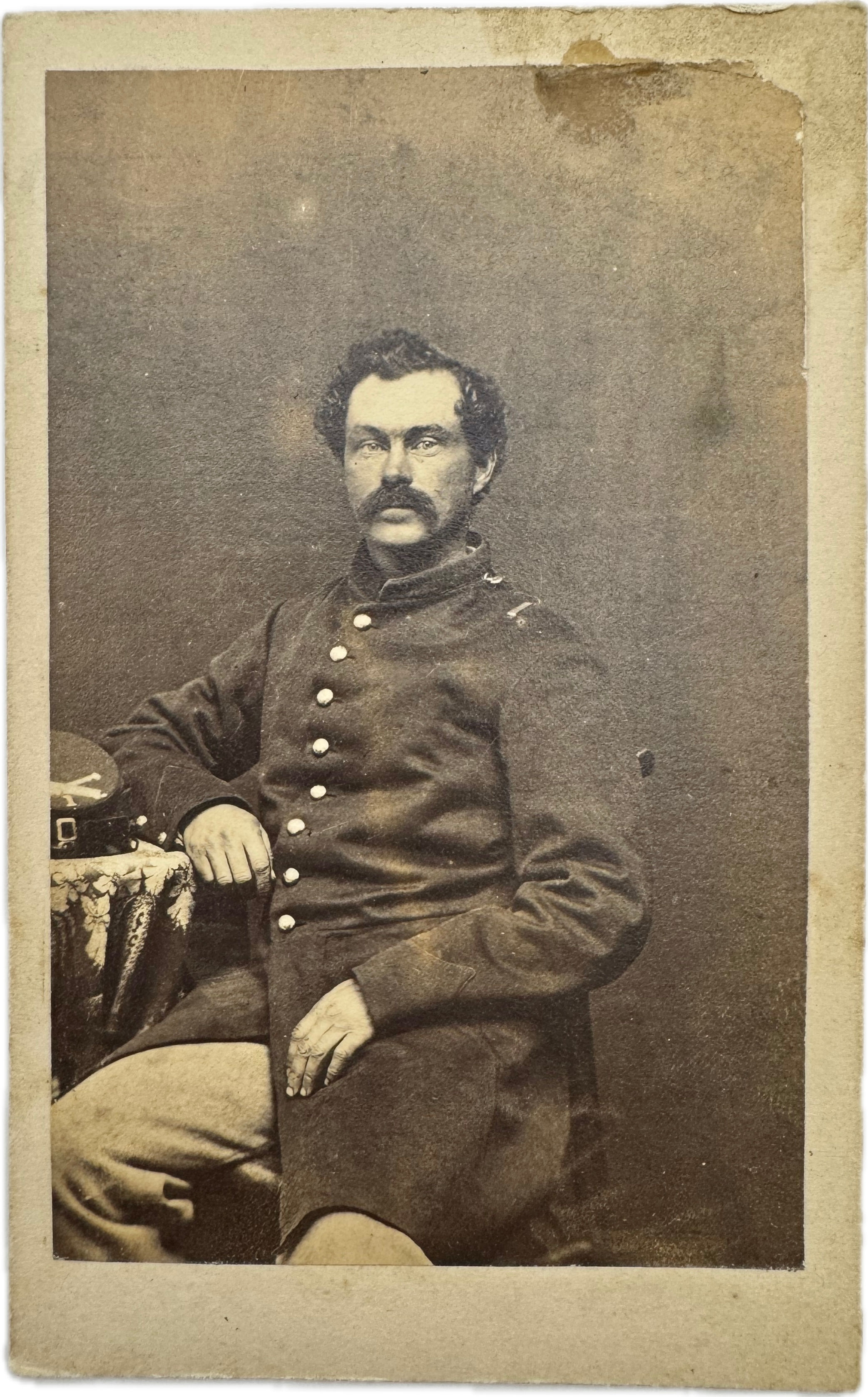CDV of Moses Clement 1st Massachusetts Heavy Artillery
CDV of Moses Clement 1st Massachusetts Heavy Artillery with Wolff's Gallery No. 10 Royal Street, Alexandria, VA.
Moses W. Clement was a residence of Andover, MA; a 27-year-old Carpenter.
He enlisted on 7/5/1861 at Andover, MA as a 2nd Lieut.On 7/5/1861, he was commissioned into "H" Co. Massachusetts 1st Heavy Artillery.
He was Mustered Out on 10/15/1864
Promotions:
- 1st Lieut 1/18/1862
- Capt 12/7/1863 (As of Co. A)
Died 10/22/1885 in Napa City, CA
The 1st Regiment Massachusetts Volunteer Heavy Artillery originated from the 14th Regiment Massachusetts Volunteer Infantry, organized in Essex County in summer 1861. Ordered to Fort Warren, Boston Harbor, the regiment was mustered into U.S. service on July 5, with William B. Greene appointed colonel.
Initially sent toward Harper’s Ferry in August, the regiment was redirected to Washington, D.C., where it performed garrison duty at Fort Albany and nearby forts. In late 1861, the unit was expanded and converted to heavy artillery under Special Order No. 1 (Jan. 2, 1862), with the official name change occurring Sept. 19, 1863.
Throughout 1862–1863, the regiment guarded Washington's defenses, built roads, and strengthened fortifications. Several companies served at Maryland Heights and other locations near Harper’s Ferry. During the Gettysburg Campaign, Company I was captured at Winchester while destroying equipment to prevent its capture by Lee’s forces.
Colonel Greene resigned in October 1862, succeeded by Col. Thomas R. Tannatt. The full regiment continued garrison duties until May 1864, when it joined the Army of the Potomac and saw its first major combat at the Battle of Harris Farm (May 19, 1864), suffering over 390 casualties, including the death of Major Rolfe.
Subsequent engagements included Cold Harbor, Petersburg, and Deep Bottom, with varying losses. On June 22, 1864, the regiment was heavily hit, with 179 captured. In July, original members mustered out; Colonel Tannatt resigned days later. A smaller force remained active, participating in operations through early 1865, including Hatcher's Run and the final assault on Petersburg.
The regiment pursued Lee’s army to within two miles of Appomattox before the surrender. Afterward, it moved to Burkeville and returned to Washington by mid-May. Assigned to various forts for garrison duty, it was consolidated into four companies in July. The remaining men were mustered out on August 16, 1865, and discharged in Boston on August 25.


